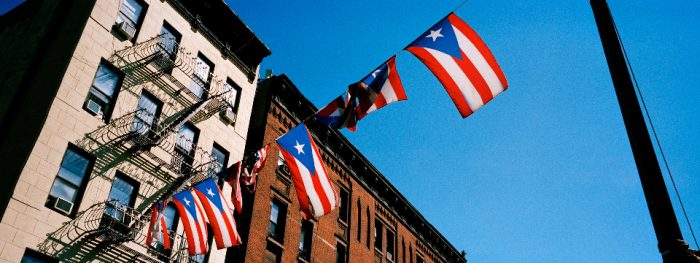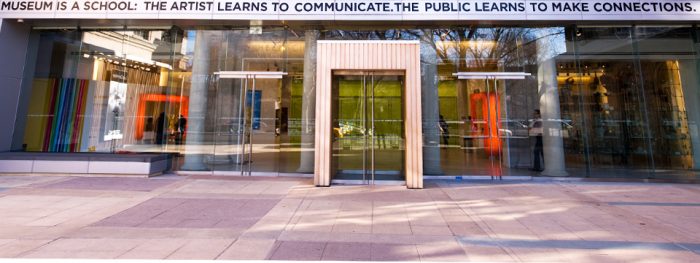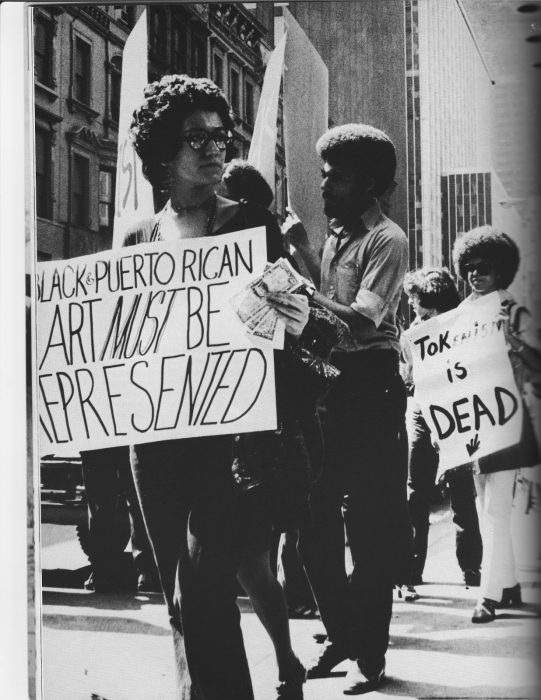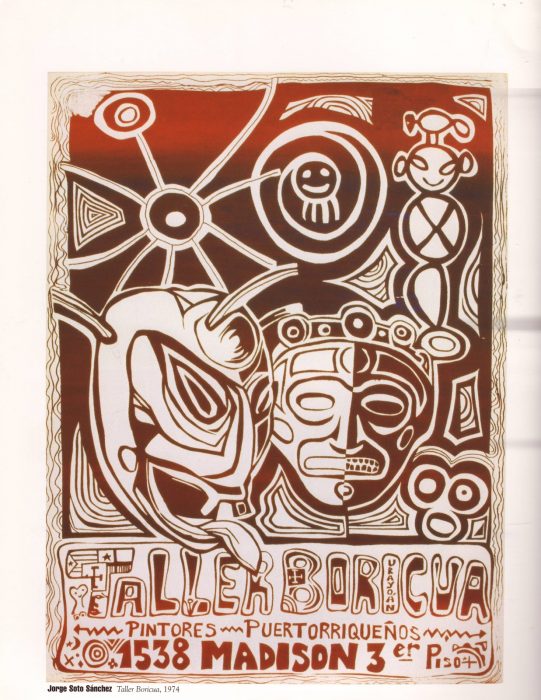Editor’s Note: El Museo del Barrio is a mainstay and important piece of Latino culture in New York City, especially in the area known as Spanish Harlem, or El Barrio. The museum has encountered financial and leaderships issues in the past few years, yet, the cultural impact of El Museo has nonetheless been significant. For more information visit its main site.
The neighborhood of “El Barrio,” also known as East Harlem or “Spanish Harlem,” represents an important place to Puerto Ricans in New York City. Formerly known as “Italian Harlem,” El Barrio, as it was renamed by the Puerto Ricans who moved there, has a history of activism and cultural vibrancy among its inhabitants.
During the late 1960s, New York City experienced several public demonstrations, such as strikes, boycotts, and sit-ins. In Harlem, things were changing and an awakening had occurred.
African-American and Puerto Rican parents, teachers, and activists demanded children receive an education that addressed their diverse ethnic backgrounds and cultures. It was this diverse student body, that composed the majority of the public school population.
The creation of El Museo del Barrio played with this notion, tearing down the barriers that stood between the marginalized community of New York City’s El Barrio and the wider world. El Museo was birthed amid a period of civil unrest and a deep desire for minorities rights and representation among the Puerto Rican and African-American communities in New York City, particularly in El Barrio.
Founded in 1969 by Raphael Montañez Ortiz and other Puerto Rican educators, artists, and community activists, El Museo hoped to counter “mainstream museums that largely ignored Latino artists.” Created during such a period of civil unrest, El Museo served as a beacon for New York City’s Puerto Rican and African-American communities.
Born in 1934, Ortiz was a very important figure in the international avant-garde scene in the 1960s, and was considered a trailblazer with regards to destruction, performance and video art. Ortiz, despite such acclaim, believed that an absence of artwork from Puerto Rican and Caribbean artists existed because of a lack of knowledge and representation of Puerto Rican culture in the United States.
For Ortiz, an artist who had works exhibited in some of New York City’s more renowned art institutions, the desire to see the art and culture of Puerto Rico represented within the art institutions was important. The lack of representation of artwork from his native Puerto Rico, to him, was symptomatic of a wider problem that existed for minorities; people from Puerto Rico and the Caribbean in particular.
In 1969, Ortiz was teaching at the High School of Music and Art, and demanded the school district that served Central and East Harlem cater to the needs of Puerto Rican and African-American students who attended. Under pressure, the superintendent of said school district (School District 4) appointed Ortiz as the curator of an educational program that featured Puerto Rican art, culture, folklore, and history.
Ortiz was hired to serve the area of El Barrio, however, an appointment to create educational materials for the Central and East Harlem districts was not enough, thus, Ortiz and other contributors, established El Museo—a community museum dedicated to the Puerto Rican diaspora in the United States.
El Museo’s place in El Barrio was significant because, among other things, it has continuously attempted to culturally uplift those who call the area home. When El Museo was first established, its home was a public school, and from 1969 to 1976 it called a brownstone adorned with several storefronts, until a permanent home was found on Fifth Avenue and 104th Street.
El Museo’s stated purpose was to, “enhance the sense of identity, self-esteem and self-knowledge of the Caribbean and Latin American peoples by educating them in their artistic heritage and bringing art and artists into their community.” El Museo had a story to tell about a rich and diverse cultural history that began with people of Puerto Rican and Caribbean descent and was unconcerned about acceptance and establishment snobbery.
Since its inception, El Museo “has been committed to celebrating and promoting Latino culture,” thus becoming a cornerstone of El Barrio, and a valuable resource for New York City.
As a home to many who identified as “Nuyorican,” El Barrio has served as a place where the unique experiences of Puerto Rico and New York City, were felt by inhabitants. The adoption of the New York chapter of the Young Lords, a Puerto Rican civil rights and nationalist group, emerged in July 1969, the same year as the creation of a non-profit art organization named Taller Boricua. These organizations emerged to “bring attention and relevancy to artist who was being ignored and systemically marginalized by the cultural gatekeepers of the times.”
The struggles that existed in New York City in the late 1960’s and the early 1970’s gave rise to collectives such as Taller Boricua and the New York chapter of the Young Lords, yet, also influenced the creation of El Museo.
The Nuyorican movement was gaining momentum.
El Museo became an educational and cultural resource in El Barrio, providing bilingual public programs, educational activities and festivals. El Museo attempted to bridge the gap from El Barrio to the creative sphere that sought to teach residents about their cultural origins.
The assumption was that artists and cultural practitioners from Puerto Rico and the Caribbean were unable to make creative contributions. Artists of Puerto Rican heritage were overlooked and this was no longer acceptable for artists, activists and cultural practitioners alike. Even as his own work broke through, Ortiz still believed that New York City’s Puerto Rican community remained disenfranchised in all aspects of their
lives.
The common thread that tied El Museo and these cultural and political organizations/collectives together was a deep desire to preserve memory; to carve out spaces that served as an archive for a culture that was at the time being overlooked.
The act of preserving memory with regard to a specific culture is one that is important and essential to ensuring that that culture has a legacy. Memory helps shape the past, present and future.
In a piece entitled “Pa’lante: Political Works from the Collection of El Museo del Barrio,” then Acting Director and Chief Curator of El Museo, Susana Torruella Leval wrote that “historical memory —the act of remembering, of salvaging the past— is the equivalent to collective survival for oppressed and colonized peoples.” She goes on to write that “the conscious act of remembering, for Latin Americans, redeems the historical past from indifference, marginalization, or distortion it has suffered from dominant European and North American cultures.”
Preserving the memory of a marginalized culture is a political act, as it defies the forces intent on eradicating that memory by ensuring that it has a place to freely exist. The political radicalism that gripped the Puerto Rican community in New York City during the early part of the 1970’s was symptomatic of the need to “exist,” to be a people with a culture and heritage they could take pride in. A culture recognized as rich, complex and importantly, in existence before colonization.
El Barrio was ready for the winds of change that swept through it. El Museo forced many to realize that the culture of Puerto Rico and the Caribbean, later Latino culture as a whole, provided a positive impact to community that at one time, was crumbling. Ortiz worried that a socially and economically disenfranchised people could never understand the value of their culture.
El Museo’s mission was to empower the Puerto Rican underclass in New York City at a time they were struggling to make their identity visible and their voices heard. In a piece written by Ortiz at the time of El Museo’s inception, he explained that “the cultural disenfranchisement I experience as a Puerto Rican has prompted me to seek a practical alternative to the orthodox museum for an authentic ethnic experience. To afford me and others the opportunity to establish living connections with our own culture, I founded El Museo del Barrio.” (Ralph Ortiz “Culture and the People,” Art in America, May–June 1971, 27)
The mission of El Museo, and by extension Ortiz’s, was to create an institution that could, and would serve as an archive. The archive would be used to speak for the generations of the people of El Barrio, whose voices were continually silenced, and whose cultures were under constant revision.
If a pursuit, be it academic or extracurricular, has the ability to elevate your conscience, aspirations and your soul, it must be experienced by everyone. If that pursuit is art, found in the public space of a gallery or museum, then that experience must not only enrich, but educate and be a place where everyone participates.
***
Wendy Hackshaw is a writer from London who is currently researching late-1970s New York City and the cultural and social movements that came out of that period. Her work focuses on revolutionary aspects of style, music and culture. You can follow her @deeshimmer.







[…] movement, some of these institutions are still around today: the Museo del Barrio, founded by Puerto Rican and Nuyorican activists and artists; the Weeksville Heritage Center, which recovered the grounds of a forgotten free black community; […]
[…] Hospital is El Barrio (East Harlem), inarguably the epicenter of Nuyorican community and culture. Like other majorly minority populated neighborhoods, the grip of gentrification is tight […]